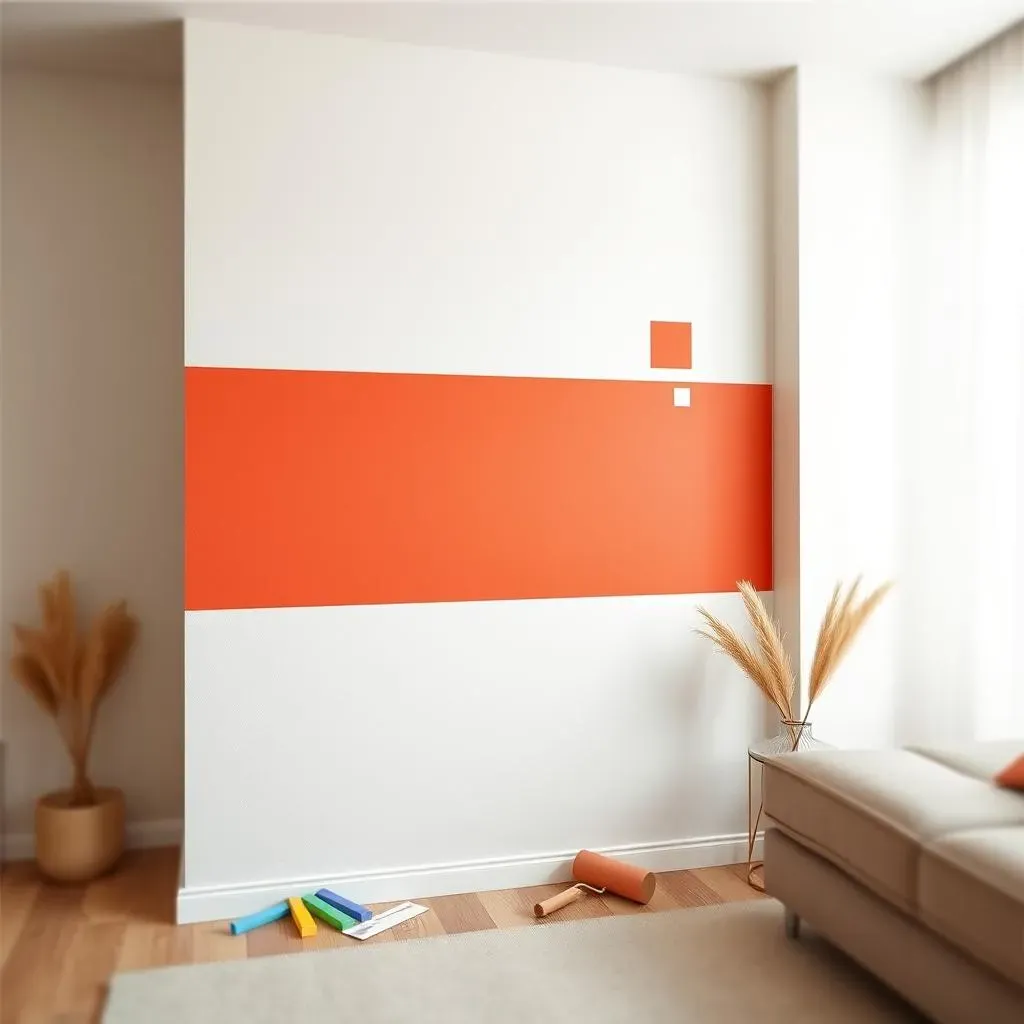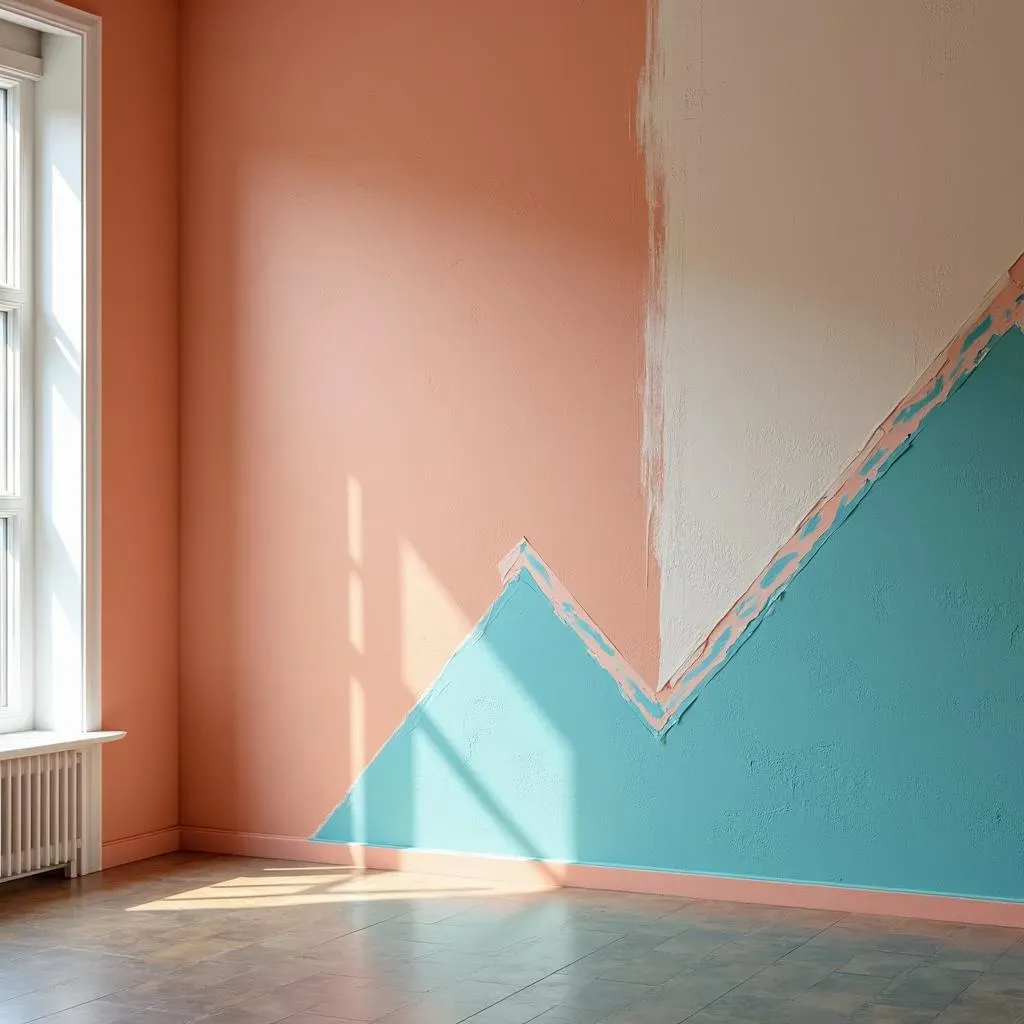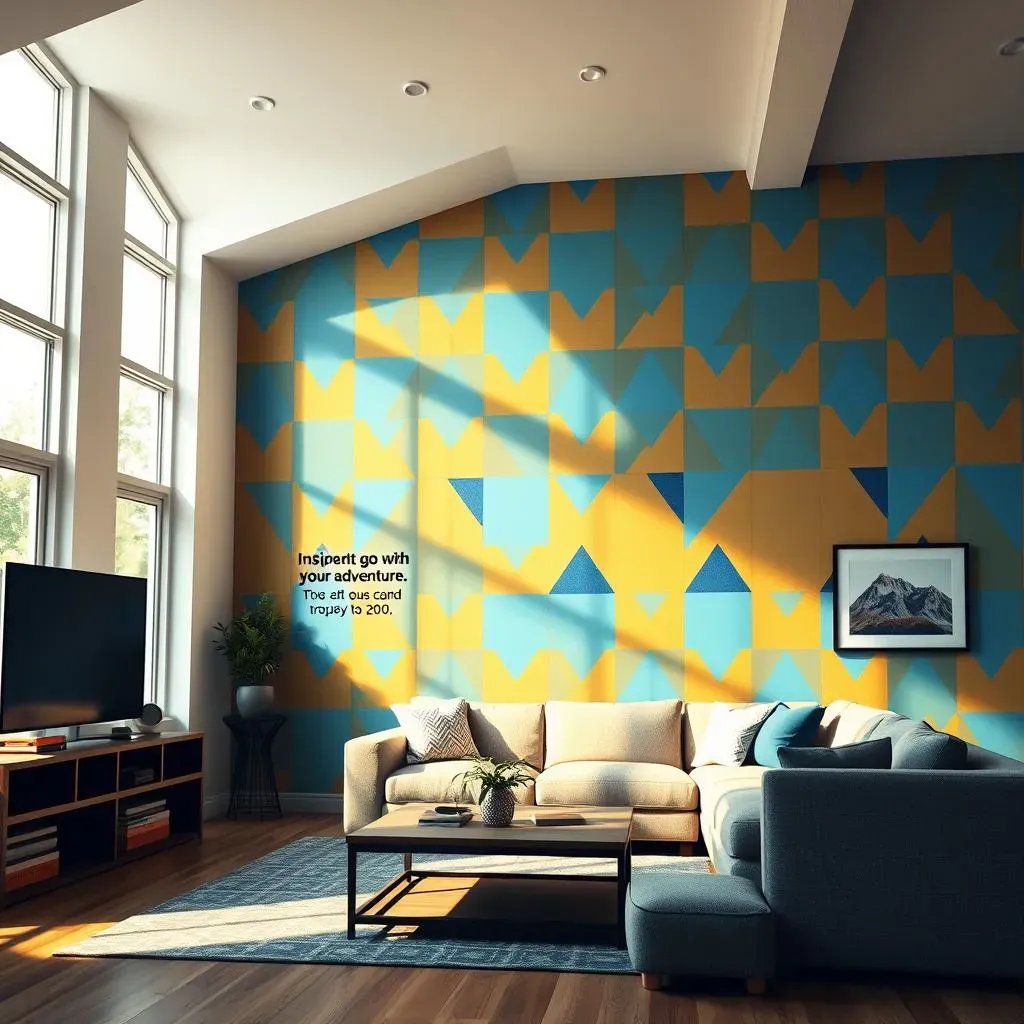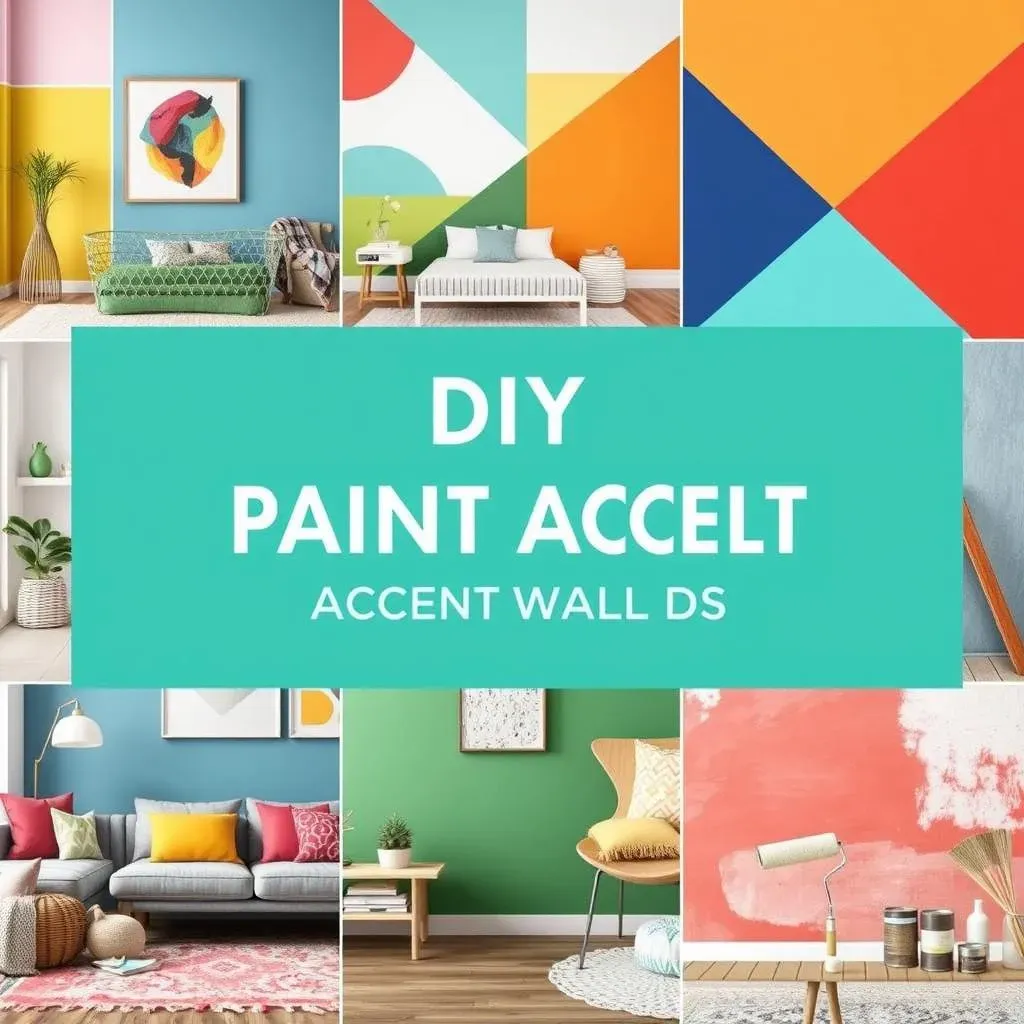Table of Contents
Ever stared at a boring wall and thought, "There has to be more to life than this?" I know I have. That's when I decided to ditch the plain and embrace the power of paint. Forget expensive wallpapers; we're diving into the world of DIY paint accent wall ideas! This isn't about becoming a professional painter overnight; it's about adding a personal touch to your space without breaking the bank. Think of it as giving your walls a personality upgrade. We’ll explore how even a beginner can create a stunning focal point with some paint, a bit of creativity, and maybe a dash of rebellious spirit. From simple color blocks to intricate patterns, we'll cover techniques and designs that are not only achievable but also incredibly fun. So, grab your brushes, put on some music, and let's transform those walls from drab to fab, one stroke at a time. Get ready to unlock the potential of your home with these easy and exciting diy paint accent wall ideas!
Easy DIY Paint Accent Wall Ideas for Beginners

Easy DIY Paint Accent Wall Ideas for Beginners
Okay, so you're itching to spice up a room, but the thought of complicated designs makes you want to hide under a blanket? I get it. Starting with easy DIY paint accent wall ideas is the way to go. Think of it like learning to ride a bike; you start with training wheels before attempting a wheelie. We’re talking about simple, yet striking, concepts that anyone can achieve. One of the easiest methods? A single, bold color. Seriously, painting one wall a different shade can instantly transform a room. No fancy techniques, no stencils, just a can of paint and a roller. It's like giving your wall a superhero cape – instant impact with minimal effort. Another great starter option is using painter's tape to create simple geometric shapes like stripes or even a large, off-center square. These designs are forgiving, and even minor imperfections can add to their charm.
Creative Techniques for DIY Accent Walls

Creative Techniques for DIY Accent Walls
Beyond the Basics: Texture and Patterns
Ready to move past just slapping on a single color? Let’s talk texture! It’s like adding a secret ingredient to your wall's recipe. One cool method is using a sponge to dab paint onto the wall, creating a soft, mottled effect, think of it like a gentle cloud pattern. It’s surprisingly easy and adds a ton of depth. Another option is rag rolling, where you twist a paint-soaked rag across the wall, leaving behind a beautiful, textured pattern that feels almost like fabric. Don’t be afraid to experiment with different tools! Even something like a crumpled piece of paper can create a unique, organic texture. I once used a plastic grocery bag to create a surprisingly cool effect, it was like abstract art right on my wall. These techniques are great for adding a subtle touch of sophistication without needing advanced skills.
And when you want to go next level, let's talk patterns! Stencils are your best friend for this. You can find them at most craft stores or even create your own. They allow you to easily repeat patterns like geometric shapes, florals, or even animal prints. Think of it as coloring inside the lines, but on a wall. Another technique I love is using painter’s tape to create more complex geometric designs like chevrons or herringbone patterns. It might seem intimidating at first, but the trick is to take your time and make sure the tape is properly sealed to prevent paint bleed. Believe me, the feeling of peeling off the tape to reveal a crisp, perfect pattern is incredibly rewarding. It’s like magic, but you’re the magician.
Technique | Description | Difficulty |
|---|---|---|
Sponge Painting | Dabbing paint with a sponge for a mottled effect. | Easy |
Rag Rolling | Twisting a paint-soaked rag across the wall for a fabric-like texture. | Medium |
Stenciling | Using stencils to create repeating patterns. | Medium |
Geometric Taping | Using painter's tape to create geometric designs. | Medium to Hard |
Adding Depth with Color Washing and Ombre
Now, let’s get a little artsy. Color washing is a technique that involves diluting paint with water to create a translucent, layered effect. It’s like giving your wall a soft, watercolor treatment. It’s super forgiving, and you can build up the color gradually until you get the look you want. I remember trying this in my bathroom and it gave it a spa-like vibe, it was like a relaxing getaway in my own home. And if you're feeling bold, why not try an ombre effect? This involves blending different shades of the same color together, creating a gradient that goes from light to dark. It's like having a sunset on your wall. You can achieve this with a brush, sponge, or even a rag, blending the colors where they meet. It’s a bit more involved, but the result is absolutely stunning.
These techniques are all about adding depth and dimension to your walls. They're not just about color; they're about creating a visual experience. And the best part? You don't need to be a professional artist to pull them off. With a little practice, patience, and a willingness to experiment, you can transform your walls into works of art. Trust me, the feeling of accomplishment when you step back and admire your handiwork is absolutely worth it. It’s like saying, “I made this, and it’s awesome!”
- Color Washing: Dilute paint with water for a translucent effect.
- Ombre: Blend different shades of the same color for a gradient.
- Layering: Build up color gradually for a customized look.
DIY Paint Accent Wall Designs: Patterns and Colors

DIY Paint Accent Wall Designs: Patterns and Colors
Finding Your Style: Patterns that Pop
Alright, let's get into the fun part: picking patterns! This is where your personality really gets to shine. Think of your accent wall as a blank canvas and your patterns as the story you want to tell. If you’re into clean and modern, geometric patterns like stripes, chevrons, or even a large-scale honeycomb design can look incredibly chic. I once did a simple, wide stripe pattern in my living room and it instantly elevated the entire space – it was like adding a tailored suit to a room. For something a bit more playful, polka dots or abstract shapes can bring a sense of fun and whimsy. Don't be afraid to mix and match, either. A combination of different patterns can create a dynamic look, just make sure they complement each other.
And here is a little secret: you don't need to be a professional designer to achieve a fantastic pattern. There are tons of free resources online that can help you plan out your design, from simple templates to complex geometric grids. I usually sketch out my ideas on paper first, just to get a sense of how they'll look on the wall. It’s like a rehearsal before the big show. The key is to choose patterns that you love and that fit with the overall vibe of your room. Remember, this is your space, so make it uniquely yours!
Choosing the Right Colors: Setting the Mood
Color, oh color! It’s like the mood ring of interior design. The colors you choose for your accent wall can completely change how a room feels. If you want a space that feels calming and serene, stick with cool tones like blues, greens, and grays. I did a soft, dusty blue in my bedroom, and it turned it into a peaceful oasis—it was like stepping into a cloud. For a more energetic and vibrant feel, warm colors like yellows, oranges, and reds are your go-to. Just be careful; these colors can be intense, so use them wisely. A deep, moody red might be perfect for a dining room, while a bright yellow could work wonders in a kitchen. I always say, let the room guide you. Think about the purpose of the space and how you want it to feel.
And don't be afraid to experiment with unexpected color combinations! Sometimes the most striking designs come from pairing colors that you might not initially think of together. A dark, charcoal gray with a pop of bright coral, for example, can create a sophisticated yet playful look. Always get paint samples before committing to a color. Colors can look totally different on a wall than they do in a paint chip. It’s like trying on clothes before buying them; you want to make sure they fit just right. I always paint a test patch on the wall and observe it at different times of day to see how the light affects it. It’s a bit of extra work, but trust me, it's worth it.
Mood | Color Palette | Ideal Room |
|---|---|---|
Calming | Blues, Greens, Grays | Bedrooms, Bathrooms |
Energetic | Yellows, Oranges, Reds | Kitchens, Living Rooms |
Sophisticated | Neutrals, Metallics | Dining Rooms, Offices |
Combining Colors and Patterns: Making it Work
Now, let's talk about combining colors and patterns. This is where things can get a bit tricky, but also incredibly rewarding. The key is to create balance and harmony. If you’re using a bold pattern, consider using a more muted color palette, and vice versa. A busy pattern in a loud color can be overwhelming, while a simple pattern in a soft color can sometimes feel too bland. I always try to find a middle ground, where the colors and patterns complement each other without competing for attention. Think of it like putting together an outfit; you want each piece to enhance the overall look. A good rule of thumb is to pick a main color and then use secondary colors to add interest and depth.
And don't forget about the existing elements in your room! Consider the colors of your furniture, the flooring, and any artwork you have. Your accent wall should complement these elements, not clash with them. It’s like adding a new member to the family; you want them to fit in. I usually take a picture of the room and use a digital design tool to play around with different color and pattern combinations. It’s like having a virtual preview of your design before you commit to painting. And remember, it’s okay to make mistakes! Sometimes the best ideas come from unexpected places. The most important thing is to have fun and let your creativity guide you. It’s your wall, after all, so make it something you love.
"The best color in the whole world is the one that looks good on you." - Coco Chanel
Personalizing Your Space with DIY Paint Accent Walls

Personalizing Your Space with DIY Paint Accent Walls
Okay, so you've got the techniques down, the patterns are swirling in your head, and you're ready to get personal. This is where your DIY paint accent wall truly becomes a reflection of you. It's not just about slapping paint on a wall; it's about creating a space that feels uniquely yours. Think of it as adding your signature to the room. One way to make it super personal is to incorporate elements that have special meaning to you. Maybe you have a favorite quote that you want to stencil onto the wall, or you can create a pattern inspired by a place you've traveled. I once painted a mountain range on my wall after a hiking trip, and every time I look at it, it brings back those awesome memories, it was like bringing the outdoors in. Another idea is to use colors that evoke specific emotions or memories for you. It's all about making your space a place where you feel comfortable and inspired.
And hey, don't feel like you need to stick to the conventional. Who says an accent wall needs to be a single wall? You can create an accent on a part of the wall, or even on a ceiling! I've seen people paint geometric patterns that extend from the wall onto the ceiling, creating a truly unique and immersive look. Or, think about painting a mural! It might seem intimidating, but it's a great way to showcase your creativity and create a one-of-a-kind statement in your home. It's like turning your wall into a piece of art that you can enjoy every single day. The possibilities are endless, and the best part is that it's all yours. So, unleash that inner artist and create a space that truly reflects who you are.
Personalization Idea | Description | Personal Touch |
|---|---|---|
Favorite Quote | Stencil a meaningful quote on the wall. | Adds inspiration and personal meaning. |
Travel-Inspired Pattern | Create a pattern based on a memorable trip. | Brings back cherished memories. |
Mural | Paint a full-scale mural on the wall. | Showcases creativity and artistic talent. |
Personal Color Palette | Use colors that evoke specific emotions or memories. | Creates a space that feels uniquely yours. |
And remember, your accent wall doesn't have to be a permanent fixture. It’s like having a canvas that you can change whenever you want. If you get tired of a particular color or pattern, you can always repaint it! It's like giving your room a makeover whenever you feel like it. And that's the beauty of DIY – it's flexible, affordable, and totally customizable. I always tell people, don't be afraid to experiment and try new things. It's all about the journey, and the walls are just your playground. So, go out there, grab your paint brushes, and create something that makes you smile every time you walk into the room. Your walls are waiting for their moment to shine, and you're the artist who can make it happen. Trust me, the sense of accomplishment and the joy of having a personalized space are totally worth the effort.
"Have no fear of perfection, you'll never reach it." - Salvador Dali.
